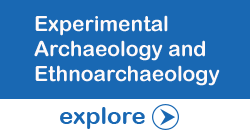Lecture_Sahnouni_CENIEH_SCHE
Lecture by Professor Mohamed Sahnouni
The Sharma Centre for Heritage Education along with the Government of Tamil Nadu, Department of Archaeology jointly organized a lecture by Professor Mohamed Sahnouni, National Centre for Research on Human Evolution (CENIEH), Burgos, Spain on the “North African Early Palaeolithic: Recent excavations at Ain Hanech and Tighennif, Algeria” on 5/3/20, 3.30 pm, at the Tamil Virtual Academy, Chennai
Abstract
 North Africa is a crossroad between Europe and the Middle East, and it is likely that early hominids inhabited this region prior to their dispersal into Eurasia. However, due to obsolete data and lack of systematic research, little information was available on the tempo and mode of early hominid occupation in this part of the African continent. To remedy to this situation, new investigations are being conducted in two key Lower Paleolithic sites in northern Algeria, namely Ain Boucherit and Ain Hanech, and the hominid site of Tighennif. The approach used is multidisciplinary involving a team of international scientists in the fields of archaeology, geology, geochronology, paleontology, paleoecology, etc. The research at Ain Boucherit and Ain Hanech addressed pertinent questions including: When did early hominins first inhabit North Africa? How did they adapt to the local environment? Which kind of lithic technology did they use? What food items were incorporated in their diet?
North Africa is a crossroad between Europe and the Middle East, and it is likely that early hominids inhabited this region prior to their dispersal into Eurasia. However, due to obsolete data and lack of systematic research, little information was available on the tempo and mode of early hominid occupation in this part of the African continent. To remedy to this situation, new investigations are being conducted in two key Lower Paleolithic sites in northern Algeria, namely Ain Boucherit and Ain Hanech, and the hominid site of Tighennif. The approach used is multidisciplinary involving a team of international scientists in the fields of archaeology, geology, geochronology, paleontology, paleoecology, etc. The research at Ain Boucherit and Ain Hanech addressed pertinent questions including: When did early hominins first inhabit North Africa? How did they adapt to the local environment? Which kind of lithic technology did they use? What food items were incorporated in their diet?
Results show that early hominids inhabited North Africa 2.4 million years ago, earlier than it was commonly believed, and mostly contemporaneous with eastern Africa. The technology they manufactured is Oldowan, which they used primarily for processing animal carcasses indicative of a savanna ecology. T
he research undertaken at Tighennif deals with the adaptation of Homo erectus in arid environment during the Middle Pleistocene Transition between 1.2-0.8 million years ago. Preliminary evidence suggests that Tighennif hominids not only coped well with the dry environment but also were innovative technologically by using sophisticated Acheulean stone tools to process large animal carcasses.
 Professor Mohamed Sahnouni
Professor Mohamed Sahnouni
Mohamed Sahnouni is currently Research Professor and Coordinator of the Archaeology Program at the National Center for Research on Human Evolution (CENIEH) (Burgos, Spain). He received doctoral degrees in Quaternary Geology from the University Pierre & Marie Curie (Paris, France) and in Anthropology from Indiana University Bloomington (Indiana, USA). His academic and research interests include Paleoanthropology with focus on early hominid technological and subsistence behavior in relation to Paleoecology. He was faculty member at the University of Algiers (Algeria), University Rovira I Virgili (Tarragona, Spain), and Indiana University (Bloomington, USA). Sahnouni is currently directing paleoanthropological research projects in Africa involving a multidisciplinary international team of scientists to investigate: 1) the timing and character of earliest human occupation in North Africa; and 2) Homo erectus behavior and adaptation in arid environment. He is also collaborating with Indian colleagues to investigate early human dispersal in the Indian Subcontinent. He extensively published his research in high impact journals including Science, Journal of Human Evolution, Journal of Archaeological Science, Quaternary Science Reviews, Geobios, French Academy of Sciences, L’Anthropologie, Palevol, etc. He currently represents CENIEH in European research infrastructure projects for heritage Sciences (E-RIHS) and European Digital Archaeology (ARIADNEplus).
We are delighted to be collaborating with CENIEH and Professor Sahnouni and will upload more on this soon !


